
How to Use Limit Switch: Examples, Pinouts, and Specs
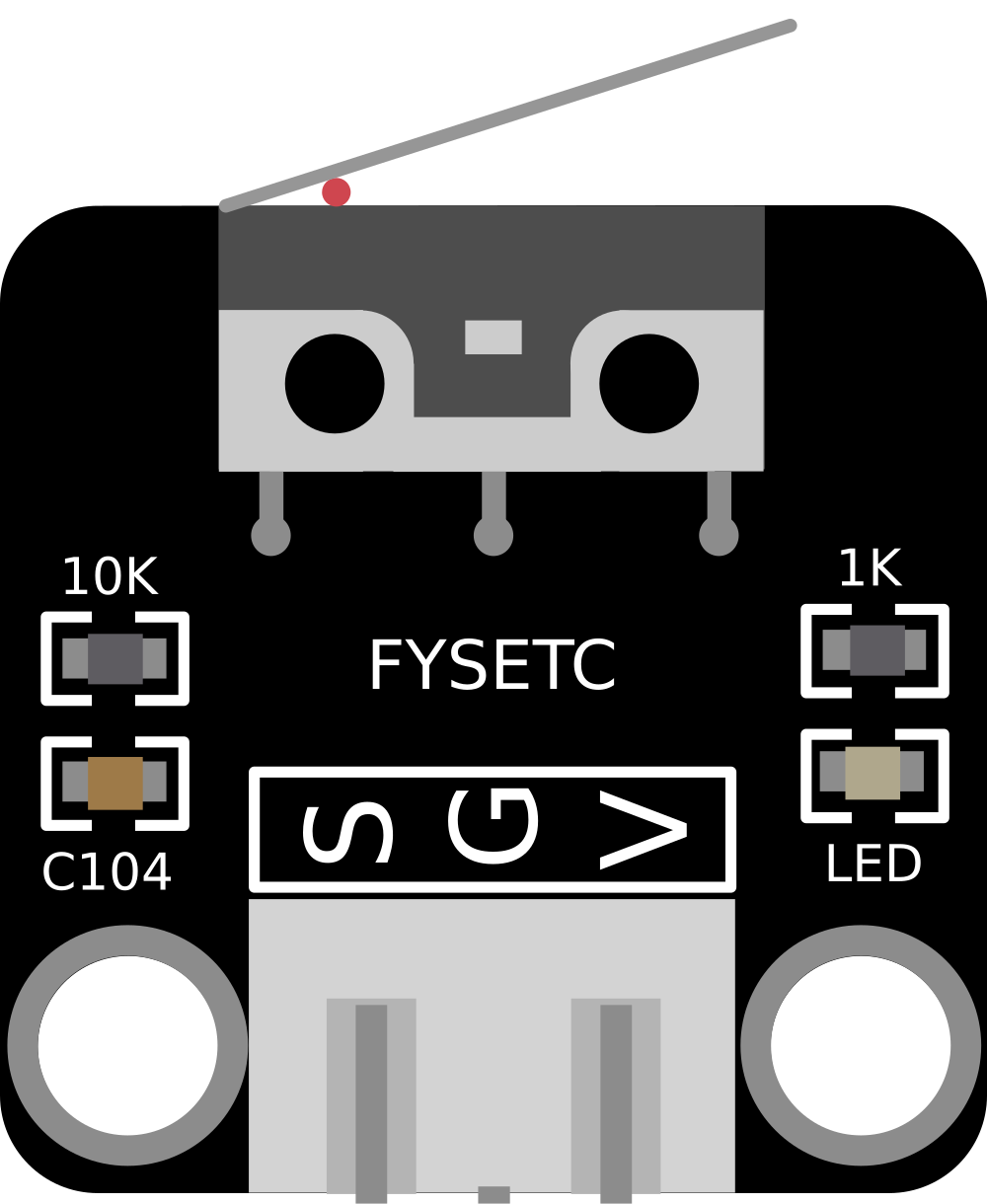
 Design with Limit Switch in Cirkit Designer
Design with Limit Switch in Cirkit DesignerIntroduction
A limit switch is an electromechanical device designed to detect the presence or absence of an object or to monitor the limits of motion of a part. It is commonly used in industrial control systems and various mechanical applications to provide a control signal for the movement of machinery, such as stopping or starting an operation when an object reaches a predetermined position.
Explore Projects Built with Limit Switch
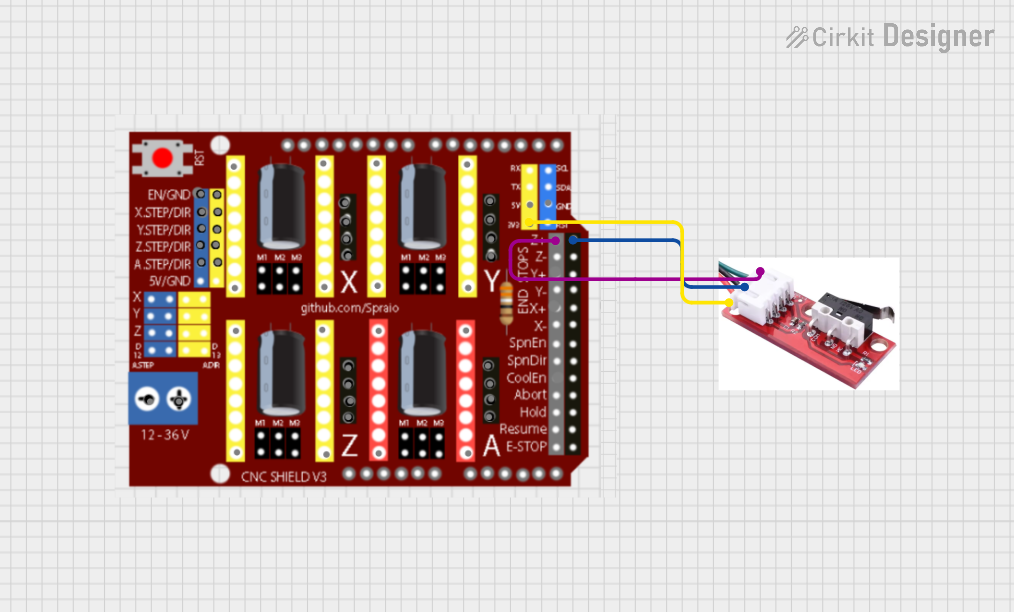
 Open Project in Cirkit Designer
Open Project in Cirkit Designer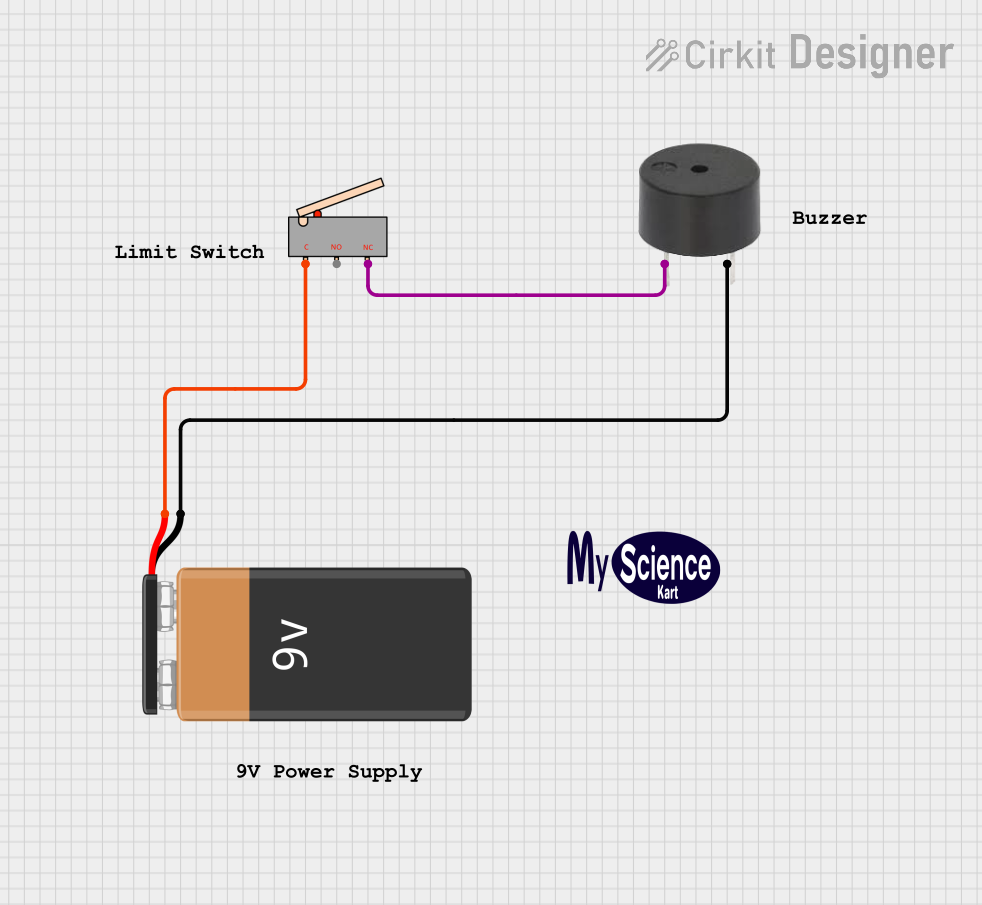
 Open Project in Cirkit Designer
Open Project in Cirkit Designer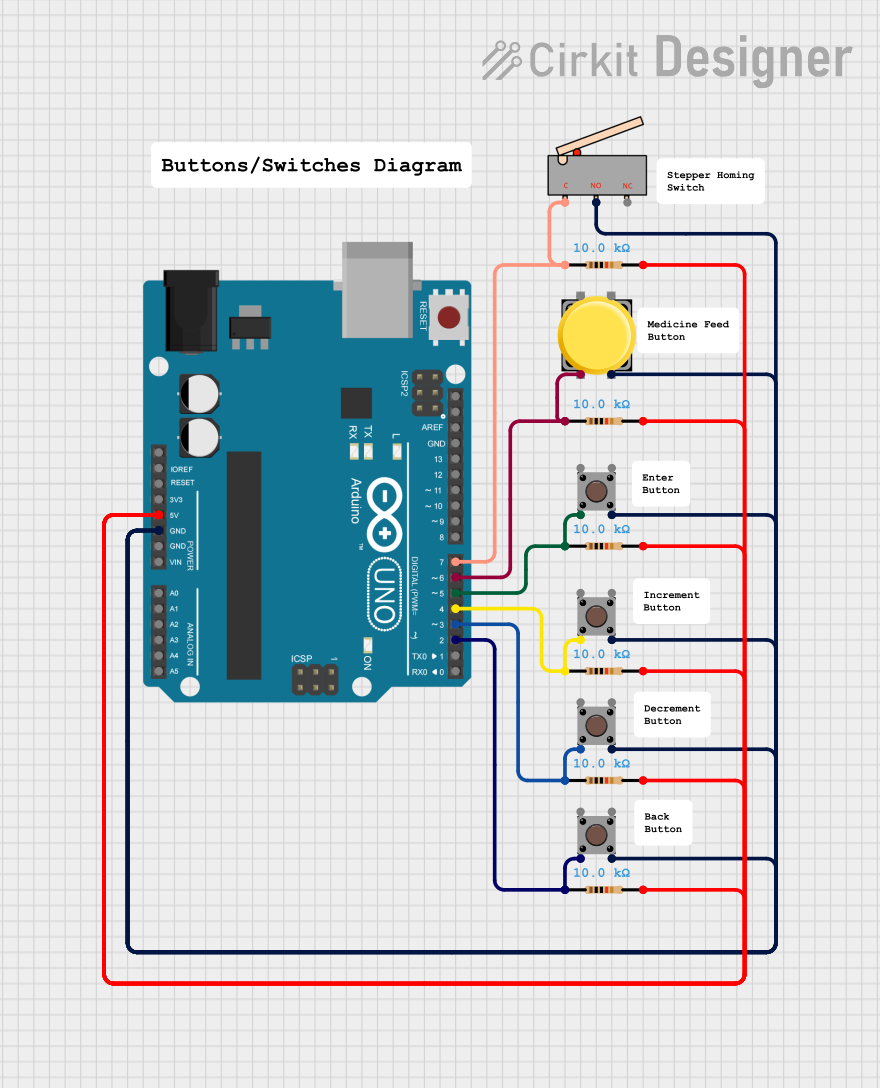
 Open Project in Cirkit Designer
Open Project in Cirkit Designer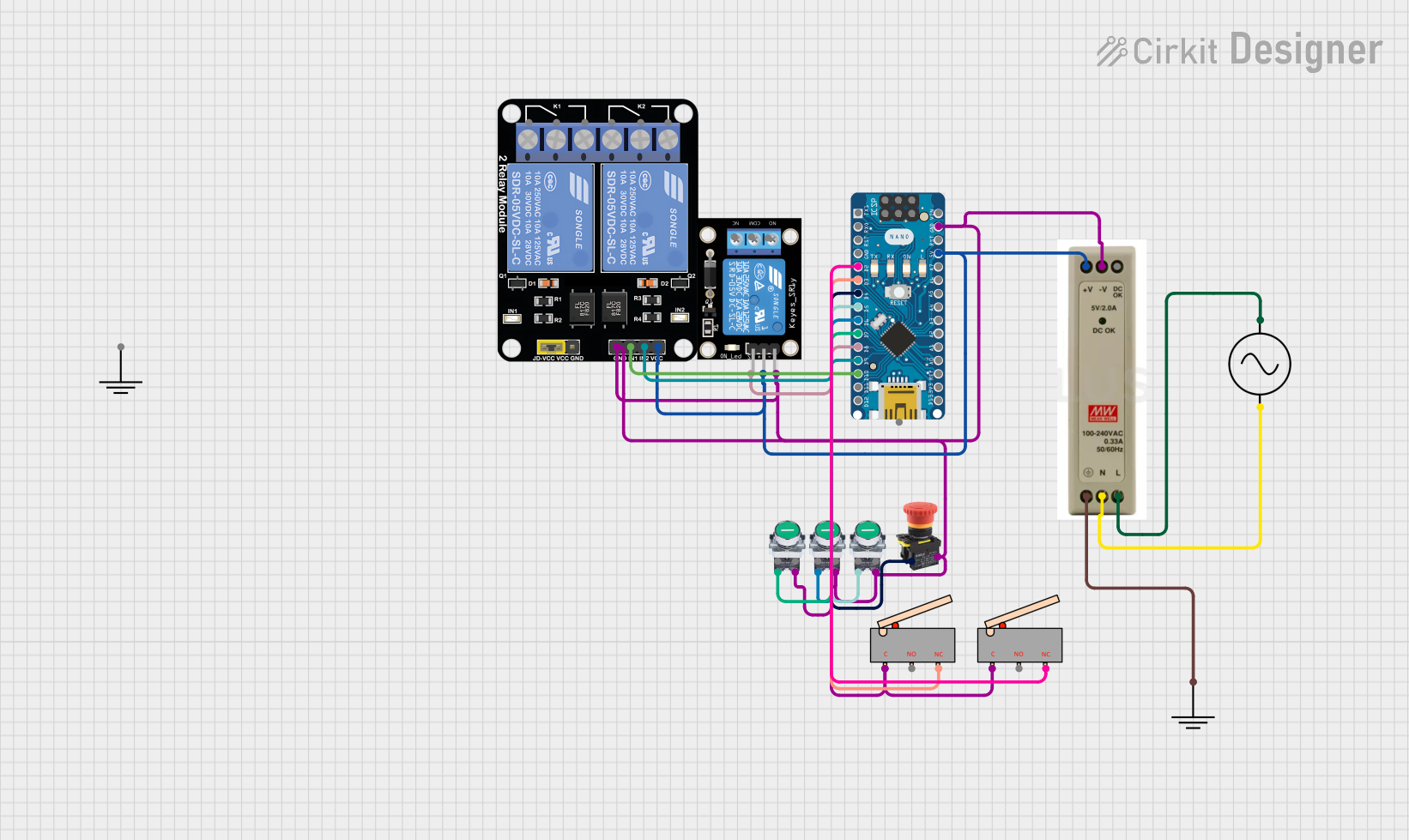
 Open Project in Cirkit Designer
Open Project in Cirkit DesignerExplore Projects Built with Limit Switch

 Open Project in Cirkit Designer
Open Project in Cirkit Designer
 Open Project in Cirkit Designer
Open Project in Cirkit Designer
 Open Project in Cirkit Designer
Open Project in Cirkit Designer
 Open Project in Cirkit Designer
Open Project in Cirkit DesignerCommon Applications and Use Cases
- Industrial Automation: To control the movement of mechanical parts in automated assembly lines.
- Safety Mechanisms: To prevent machinery from moving beyond safe operational limits.
- Position Sensing: In elevators, gates, and doors to detect the open or closed state.
- End-of-Travel Detection: In CNC machines to establish reference points for machine components.
Technical Specifications
Key Technical Details
- Rated Voltage: Typically ranges from 5V to 250V, depending on the model.
- Rated Current: Can vary from a few milliamps to several amps.
- Contact Configuration: Normally Open (NO), Normally Closed (NC), or both.
- Mechanical Life: Often rated for millions of actuations.
- Operating Force: The force required to activate the switch varies by design.
Pin Configuration and Descriptions
| Pin Number | Description | Notes |
|---|---|---|
| 1 | Common (COM) | Connects to the power supply or ground |
| 2 | Normally Closed (NC) | Closed when the switch is not activated |
| 3 | Normally Open (NO) | Closed when the switch is activated |
Usage Instructions
How to Use the Limit Switch in a Circuit
- Identify the Pins: Determine the COM, NO, and NC pins on the limit switch.
- Wiring: Connect the COM pin to one side of the power supply. Connect the NO or NC pin to the load (e.g., relay, LED, motor controller) depending on the desired behavior.
- Mounting: Secure the limit switch in a position where the moving object will engage the actuator of the switch at the desired point.
- Testing: Manually activate the switch to ensure it operates the connected load as expected.
Important Considerations and Best Practices
- Debouncing: Limit switches may require debouncing, either through hardware or software, to prevent false triggering from mechanical vibrations.
- Load Ratings: Ensure the switch's voltage and current ratings are suitable for the load it will control.
- Environmental Factors: Choose a limit switch with appropriate protection for the operating environment (e.g., dust, moisture, temperature).
Example Code for Arduino UNO
// Define the pin connected to the limit switch
const int limitSwitchPin = 2;
void setup() {
pinMode(limitSwitchPin, INPUT_PULLUP); // Set the limit switch pin as input with internal pull-up
Serial.begin(9600); // Initialize serial communication
}
void loop() {
// Read the state of the limit switch
int switchState = digitalRead(limitSwitchPin);
// Check if the switch is pressed (assuming NO configuration)
if (switchState == LOW) {
// The limit switch is activated
Serial.println("Limit switch is activated.");
// Add control logic here (e.g., stop a motor)
} else {
// The limit switch is not activated
Serial.println("Limit switch is not activated.");
// Add control logic here (e.g., run a motor)
}
delay(100); // Debounce delay
}
Troubleshooting and FAQs
Common Issues Users Might Face
- Switch Does Not Activate: Ensure the object properly engages the actuator and check wiring connections.
- Intermittent Operation: Check for mechanical wear or loose connections. Consider implementing a debounce circuit or software debouncing.
Solutions and Tips for Troubleshooting
- Testing Continuity: Use a multimeter to test the continuity of the switch in both the activated and non-activated states.
- Adjusting Actuator: Some limit switches have adjustable actuators. Ensure it is set to the correct position for reliable operation.
FAQs
Q: Can I use a limit switch with a microcontroller like an Arduino? A: Yes, limit switches can be easily interfaced with microcontrollers using digital input pins.
Q: What is the difference between NO and NC configurations? A: NO (Normally Open) means the switch is open (non-conductive) when not pressed, and NC (Normally Closed) means the switch is closed (conductive) when not pressed.
Q: How do I know if my limit switch requires debouncing? A: If you observe erratic behavior or multiple signals from a single actuation, debouncing may be necessary.